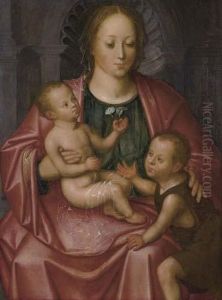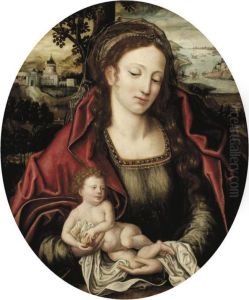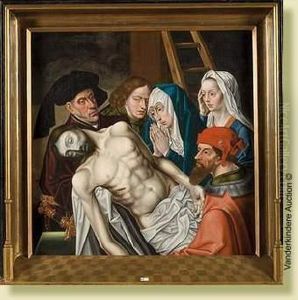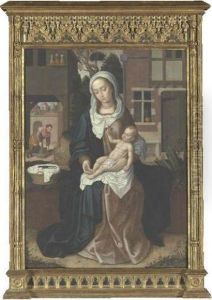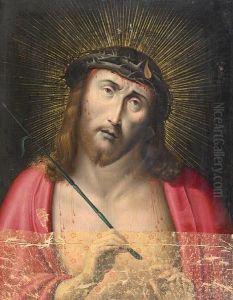Pieter I Claeissins Paintings
Pieter I Claeissins, also known as Pieter Claeissens the Elder, was a Flemish Renaissance painter born around the year 1500 in the city of Bruges, which was then part of the Habsburg Netherlands. He came from a family of artists and was the patriarch of a painting dynasty that would include his sons and grandsons, who were also named Pieter, as well as other family members active in the arts.
Claeissins' oeuvre primarily consisted of religious works and portraits, which were in high demand by the local bourgeoisie, religious institutions, and the city's guilds. His style was heavily influenced by the Flemish Primitives, a group of painters active in the Southern Netherlands during the 15th and early 16th centuries, which includes renowned artists such as Jan van Eyck and Hans Memling. Claeissins' work was characterized by precise detailing, a strong sense of realism, and a delicate handling of color and light.
Throughout his career, Claeissins was deeply involved in the artistic community of Bruges. He held the position of head of the local Guild of Saint Luke, the association of painters, on several occasions. His prominence in the city was not only due to his artistic skill but also to his engagement with the social and economic networks of the time. He maintained a large workshop, which not only produced paintings but also trained the next generation of artists, including his own descendants.
Pieter I Claeissins died in 1576, leaving behind a legacy that would be carried on by his family. His works can still be found in various museums and collections, offering insights into the religious and social contexts of the 16th-century Low Countries. His contributions to the Flemish Renaissance and his role in shaping the artistic heritage of Bruges are still recognized by art historians today.
